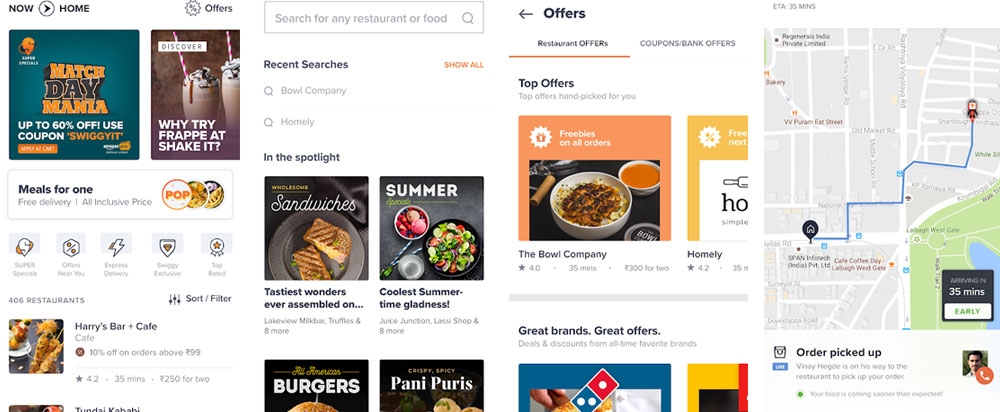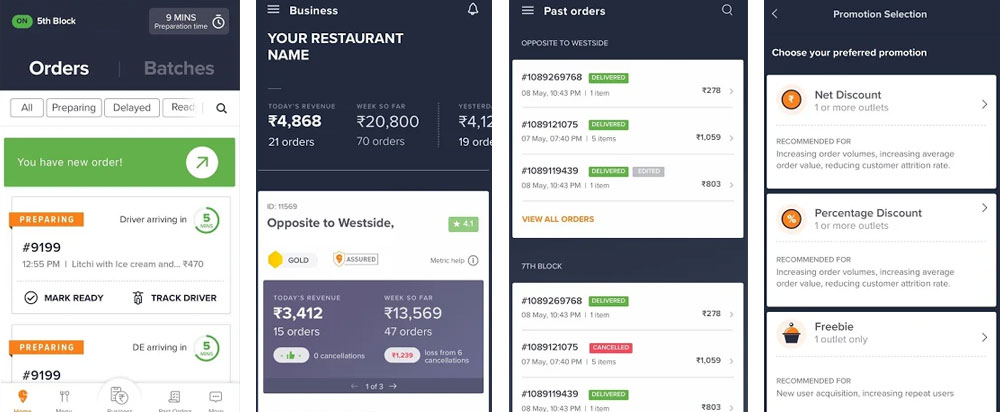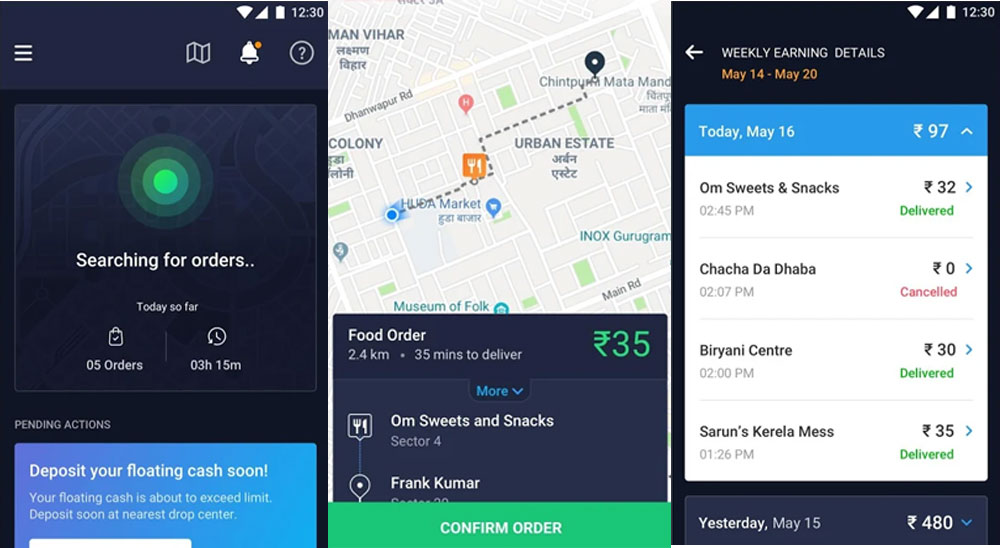3 Pillars of an On-Demand Food Delivery App You Should Know

Author : Abishek Surya RS 11th Feb 2020

In the age of app development, several apps are being made every single day. Several apps are released, and some go on to make a significant impact on your lives. One such area where apps have made a big change is in ordering food. Thanks to the food delivery apps, you can now order food from the convenience of your home. With this in mind, let us discuss the various panels of an on-demand food delivery app.
The 3 Pillars of the App are:
- User View
- Restaurant View
- Delivery Agent View
1. User View – What the Customer Sees

Every user that installs your app needs to register and proceed to the login screen.
1. Login
There are 2 types of login methods: using social sign-ups (Facebook, Google, Twitter, etc.), or by entering a Verification codeVerification codeVerification code is a security protection method used by form owners to avoid Internet robots from abusing and spamming their web forms. There are different verification code types, but the most common used is CAPTCHA and Smart Captcha. sent to your mobile number.
2. Location
Based on the location, you can show the local restaurants available and give the user the option to choose according to his/her preference.
3. Homepage
This screen needs to be clean and easy to understand for the user. It shows what restaurants are locally available, those running promotions, and cuisines based on local preferences.
4. Main Menu
It is one of the standout features of any best food delivery app. In general, you can show options like the restaurants available, menu details such as images of cuisines, delivery time, user reviews, etc.
5. Delivery location
The app can recognize the current user location as the address is being typed, or the user can adjust the pin according to the current location.
6. Add-to-Cart Option
This section captures what items have been selected before making the purchase. Making it as transparent as possible is very important in building a good user experience. Displaying a plus/minus sign can reduce and ease the steps involved in changing the quantity. The prices can also be calculated accordingly.
7. Modes of Payment
This is the next screen, once the user is done selecting the food items and the respective quantity. Based on geography, you need to make sure that different payment options are available to the user.
8. Reviews
By encouraging users to leave reviews on different orders, you can evaluate the restaurants’ services and can also affect their popularity score.
9. Previous Orders
You can provide a section for the user to keep track of the past orders so that reordering the same items can now be made easier and faster.
10. Promos and Discounts
You can reach the customers and let them know the newest offers and discounts through app notifications.
11. Delivery Contact
You can include the contact details of the delivery person so that the user can communicate as and when needed.
12.Real-time Tracking
This option is used to track the exact location of the delivery person and check how long it might take for the delivery to be made.
13.Search Features
By providing several search features, you can improve the overall ease and usability of your app. By showing a list of restaurants for a few characters typed, the user need not use a lot of filters to get what is being searched for.
2. Restaurant View – What The Restaurant Owners Do

Restaurant owners need to register their restaurants separately through an app different from the user app. This app usually collects extra business information such as taxation details, country of origin, etc.
1. Order Dashboard
A Real-time interactive dashboard for the restaurant capturing orders such as upcoming ones delivered orders, which help with getting an overall view of what is happening.
2. Accept or Reject
This is the crucial factor in determining whether the app does a good job of tracking requests. There is a deadline that needs to be enforced before you can take in order from the restaurant. Similarly, the order needs to be declined if there is indecision. Having an easy swipe or one-tap button to enforce such a decision will help in determining such factors.
3. Detailing & Payments
For the restaurant owner, there should be several options available to load like restaurant images, logos, hours-of-operation, etc. There need to be options for customizing the food menu as well as introducing discounts. When it comes to payments, they need to see the entire orders processed and the money they have received from their side. A history of payments and revenue reports can also be included in any best food delivery apps.
3. Delivery Agent View

After the order is placed, it has to be delivered to the customer within the given timeframe. For this, the delivery agents are deployed, who use the food delivery app. These agents are provided with views of their own, which have the following features.
1. Login
The agent authenticates so that he can sign in and confirm his availability to deliver the orders.
2. Order Placed
Once an order is placed, and auto-assignment mechanism can be used to route it to a nearby agent based on location and time needed to deliver.
3. Order Updates
The status of the package undergoes real-time updates as it goes from being ordered to being picked till finally being delivered.
4. Order History
Every agent is given a list of parameters like ID, location. Using that, the previous order history is captured, and the agent can also see the orders previously completed till date.
5. Agent Contact
When the delivery agent accepts the order, a hotline number is provided to facilitate communication between the delivery agent and the customer.
6. Payment Options
All available payment options, including Cash-on-Delivery, are included so that the agent records the payments in the system.
7. MAPS Navigation
To find the fastest and shortest route, the delivery agent can use MAPS to get to the destination within the deadline.
8. Online Support
The agent can make use of online support of any issues with address, delivery, or any other concerns during delivery.
Final Thoughts
Being prompt and being user-friendly is really important while remembering that integrating features like machine learning and tracking social media feedback is equally important. Both channels of engagement are important to identify the demands of the customer.
When developing an on-demand food delivery app, the most important part remains a consistent UI/UX. A great iOS/Android development team also adds to your strength, as the user base continues to grow, and mobile-centric growth keeps driving business innovation.
Before developing a best food delivery app, it is important to consult with experts. Our expert developers are willing to help you with your queries. Line up your queries to media@techaffinity.com or schedule a meeting with our experts.
